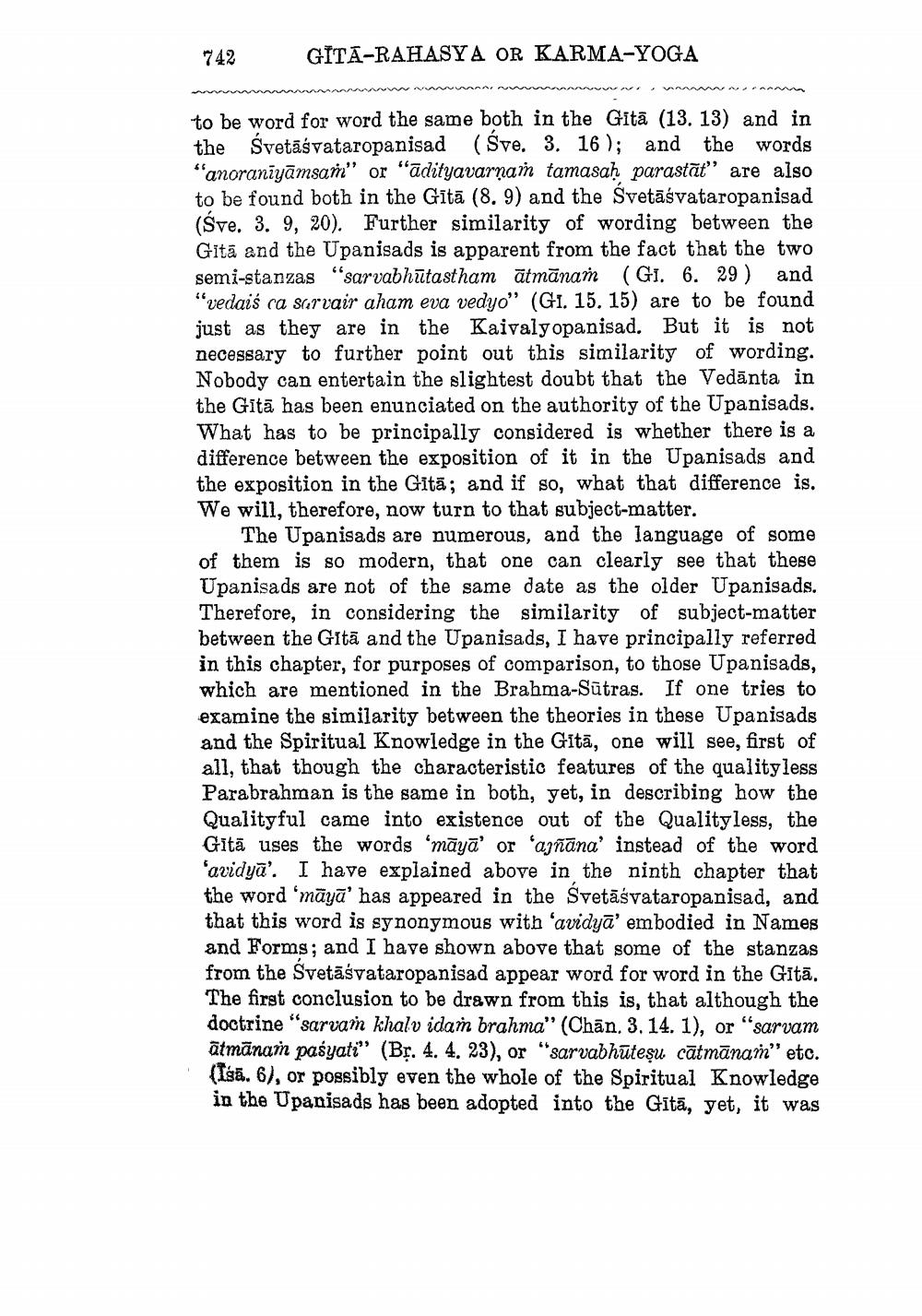________________
742
GITĀ-RAHASYA OR KARMA-YOGA w
wwnnnnnnnnnnnnnnnn to be word for word the same both in the Gita (13. 13) and in the Svetāśvataropanisad (Sve. 3. 16 ); and the words "anoranīyāmsan" or "ādityavarnam tamasah parastāt" are also to be found both in the Gītā (8.9) and the Svetāśvataropanisad (Sve. 3. 9, 20). Further similarity of wording between the Gita and the Upanisads is apparent from the fact that the two semi-stanzas "sarvabhūtastham ātmānam (Gi. 6. 29 ) and "vedaiś ca survair aham eva vedyo" (GI. 15. 15) are to be found just as they are in the Kaivalyopanisad. But it is not necessary to further point out this similarity of wording. Nobody can entertain the slightest doubt that the Vedānta in the Gītā has been enunciated on the authority of the Upanisads. What has to be principally considered is whether there is a difference between the exposition of it in the Upanisads and the exposition in the Gitā; and if so, what that difference is. We will, therefore, now turn to that subject matter.
The Upanisads are numerous, and the language of some of them is so modern, that one can clearly see that these Upanisads are not of the same date as the older Upanisads. Therefore, in considering the similarity of subject-matter between the Gitā and the Upanisads, I have principally referred in this chapter, for purposes of comparison, to those Upanisads, which are mentioned in the Brahma-Sūtras. If one tries to examine the similarity between the theories in these Upanisads and the Spiritual Knowledge in the Gītā, one will see, first of all, that though the characteristic features of the qualityless Parabrahman is the same in both, yet, in describing how the Qualityful came into existence out of the Qualityless, the Gitā uses the words 'māyā' or 'ajñāna' instead of the word 'avidya'. I have explained above in the ninth chapter that the word 'māyā' has appeared in the Svetāśvataropanisad, and that this word is synonymous with 'avidyā' embodied in Names and Forms; and I have shown above that some of the stanzas from the Svetāśvataropanisad appear word for word in the Gītā. The first conclusion to be drawn from this is, that although the doctrine "sarvam khalv idam brahma" (Chān. 3. 14. 1), or "sarvam ātmānam paśyati" (Br. 4. 4. 23), or "sarvabhūteşu cātmānam" etc. (Isa. 6), or possibly even the whole of the Spiritual Knowledge in the Upanisads has been adopted into the Gītā, yet, it was




